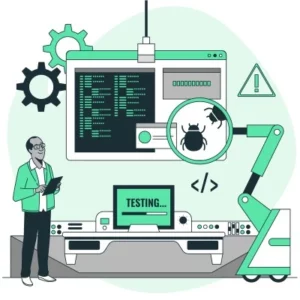Table of Contents
Key Takeaways:
- Xray integrates natively with Jira, allowing teams to manage test cases, plans, and executions directly within their existing project management environment for seamless collaboration.
- It supports both manual and automated testing, including BDD (Behavior-Driven Development), making it versatile for diverse QA needs and workflows.
- Xray provides robust traceability by linking test cases to requirements, user stories, and defects, ensuring comprehensive coverage and easier impact analysis.
- The tool offers customizable reports and dashboards for real-time visibility into test progress, coverage, and defect trends, enabling faster decision-making and release cycles.
- Best practices such as organizing test repositories, reusing preconditions, automating repetitive tests, and maintaining clear documentation help maximize efficiency and maintainability in Xray-based test management.
Introduction
Imagine you are part of a software testing team tasked with ensuring a new product release is as flawless as possible. You use multiple tools, collaborate with developers, keep track of numerous test cases manually or on scattered spreadsheets, and often find communication gaps that slow down your progress. Sounds familiar, right? This is a common struggle many QA professionals face today.
But what if there was a way to bring all your test management within the platform your whole team already uses—Jira? Enter Xray, a game-changing test management app designed to streamline your software testing process, bridge collaboration gaps, and help you deliver high-quality software faster than ever. Whether you’re part of a startup or an enterprise, Xray brings clarity, structure, and speed to your testing efforts.
What is Xray for Jira?
Xray is a native test management app built exclusively for Jira. It lets teams create, manage, and execute test cases directly inside Jira, making test management part of your existing development workflow. Unlike standalone test tools, Xray integrates testing with project management, bug tracking, and requirement documentation—all under one roof. This means:
- Every test case can be linked to requirements and defects, enabling full traceability.
- Test execution statuses update in real time alongside your Jira issues.
- Your team works seamlessly without context switching.

Why Should You Use Xray for Software Testing?
1: What is software testing?
Xray centralizes and organizes your manual and automated tests, improving visibility and control. It reduces duplicated effort with reusable test steps and preconditions, and it speeds up decision-making with customizable dashboards and detailed reports. Xray’s deep integration with Jira means developers, testers, and managers stay synchronized, making it especially powerful in Agile and DevOps environments.
Key advantages:
- Streamlined test planning and execution inside Jira.
- Support for multiple testing methodologies: manual, automated, BDD.
- Real-time test reporting and progress tracking.
- Enhanced collaboration and traceability from requirements to defects.
You might also like: Can You Build a Career in Software Testing without Coding?
Master Testing Skills with Industry Experts
Become a Test Engineer: Learn Core Skills from Industry-Leading Mentors and Land High-Paying Testing Jobs!
Explore ProgramCan X-ray handle Both Manual and Automated Testing?
Absolutely. Xray supports:
- Manual tests where testers follow predefined steps and record results.
- Automated tests integrated through various CI/CD pipelines and testing frameworks (e.g., Selenium, Cucumber).
- Behavior-Driven Development (BDD) tests with Gherkin syntax embedded in Jira issues.
You can view results for all test types in a unified interface, simplifying analysis and coverage assessment.
How Does Xray Enhance Reporting and Dashboards?
Xray offers a variety of customizable reports and gadgets for Jira dashboards. These provide insights like:
- Test coverage against requirements.
- Pass/fail rates and execution trends.
- Defect trends linked to testing.
- Test execution progress by version, test plan, or tester.
Reports update automatically as tests run, keeping stakeholders informed and enabling faster release decisions.
Is Xray Suitable for Agile and DevOps Teams?
Xray is purpose-built for Agile and DevOps environments, offering features that directly support rapid iteration, continuous integration, and seamless collaboration. Its deep integration with Jira means that testing is no longer a siloed activity but a core part of the development workflow, enabling teams to deliver high-quality software faster and more efficiently.
Seamless Integration with Agile Boards
Xray enhances Jira’s Agile boards by providing real-time visibility into test execution and coverage. Testers, developers, and product owners can see the status of every test case, requirement, and defect directly on the Agile board. This transparency eliminates the need for manual handoffs and ensures that everyone is aligned on the project’s progress and quality goals.
Real-Time Collaboration and Communication
With Xray, all team members—testers, developers, product owners, and business analysts—can collaborate within the same Jira environment. Testers can clarify requirements, assess risks, and provide feedback directly on user stories. Developers can see QA feedback and test results in real time, enabling faster bug fixes and better decision-making. This collaborative approach fosters a shared responsibility for quality and accelerates the feedback loop essential to Agile and DevOps.
Automated Testing and CI/CD Integration
Xray supports automated testing through integrations with popular frameworks like Selenium, Cucumber, and Jenkins. Automated test results can be synchronized with Xray, providing instant feedback on test coverage and execution status. This integration is crucial for DevOps teams, as it enables continuous testing within CI/CD pipelines, ensuring that every code change is validated before deployment.
Dynamic Test Plans and Traceability
Xray’s Dynamic Test Plans adapt in real time to changing requirements, making it easy to keep test coverage up to date as the project evolves. Every test case is linked to requirements and defects, providing end-to-end traceability. This traceability is essential for Agile teams, as it ensures that all requirements are tested and that any changes are reflected in the test suite.
Enhanced Reporting and Dashboards
Xray offers customizable reports and dashboards that provide real-time insights into test coverage, execution progress, and defect trends. These reports can be shared with stakeholders, enabling informed decision-making and faster release cycles. The ability to generate detailed reports directly from Jira saves time and ensures that everyone has access to the latest information.
Best Practices for Agile and DevOps Teams
- Use Xray’s Agile board enhancements to track test execution and coverage in real time.
- Integrate automated tests with CI/CD pipelines for continuous feedback.
- Leverage Dynamic Test Plans to keep test coverage up to date as requirements change.
- Use customizable reports and dashboards to monitor progress and share insights with stakeholders.
- Foster collaboration by encouraging all team members to contribute to quality assurance activities within Jira.
Master Testing Skills with Industry Experts
Become a Test Engineer: Learn Core Skills from Industry-Leading Mentors and Land High-Paying Testing Jobs!
Explore ProgramStep-by-Step Guide to Using Xray in Software Testing
Here’s a detailed step-by-step guide to help you implement Xray for your team:
| Step | Description |
|---|---|
| 1. Install Xray | Add Xray from the Atlassian Marketplace to your Jira instance. |
| 2. Configure Projects | Set up your projects and enable Xray issue types (Test, Test Plan, Test Execution). |
| 3. Create Test Cases | Create manual test cases with detailed steps or import automated tests. |
| 4. Organize Tests | Group tests into folders or test sets for easier management. |
| 5. Link Requirements | Associate test cases with Jira requirements or user stories for coverage tracking. |
| 6. Build Test Plans | Assemble test cases into plans for specific releases or goals. |
| 7. Execute Tests | Run manual tests and collect results, or integrate automated test runs. |
| 8. Report and Analyze | Use built-in reports/dashboards to monitor coverage, execution status, and defects. |
Best Practices for Xray Usage
To get the most out of Xray, teams should follow these proven best practices that ensure efficiency, clarity, and maintainability in their test management process.
Organize Your Test Repository
- Use folders and subfolders to group test cases logically. A well-structured repository makes it easier to find, update, and reuse tests as your project grows.
- Assign clear, descriptive titles to test cases and use consistent naming conventions to avoid confusion.
Reuse Pre-Conditions and Test Steps
- Avoid duplicating setup steps in every test case. Create reusable pre-conditions (like login or environment setup) and reference them wherever needed. This saves time and keeps your test suite consistent.
- Use tags or custom fields to categorize test cases by type, priority, or module, making them easier to filter and manage.
Link Tests to Requirements
- Always link test cases to Jira requirements or user stories. This ensures full traceability and helps you track coverage, making it easier to demonstrate that all requirements are tested.
Automate Where Possible
- Automate repetitive, high-value test cases using frameworks like Selenium or Cucumber. Integrate automated tests with Xray via REST APIs to get instant feedback and reduce manual effort.
- Use Xray’s support for BDD (Behavior-Driven Development) to write tests in Gherkin syntax, making them more readable and maintainable.
Use Dashboards and Reports
- Leverage Xray’s built-in reports and gadgets to monitor test coverage, execution status, and defect trends. Share these dashboards with stakeholders for real-time visibility.
- Create Jira filters to quickly find specific tests or failed runs, which is especially helpful during standups or daily progress checks.
Clean Up and Maintain Your Test Suite
- Regularly review and remove outdated or redundant test cases. A clean, up-to-date test suite is easier to manage and more effective.
- Update test cases as requirements change to ensure your test coverage remains accurate and relevant.
Write Clear Test Details
- Include expected results and test data directly in your test cases. This makes it easier for anyone to understand and execute the tests, even without additional context.
- Use clear descriptions and pre-conditions in your test cases to avoid ambiguity and ensure consistency.
Avoid Common Pitfalls
- Don’t rely solely on Xray for large-scale or cross-platform automation; use additional tools as needed.
- Don’t skip proper setup steps—Xray’s effectiveness depends on correct configuration and integration.
- Avoid making test sets too long; keep them focused and related to specific functionalities or modules.
Why Choose Entri’s AI-Powered Software Testing Course?
To master testing tools like Xray and more, Entri offers a comprehensive AI-Powered Software Testing Course that equips you for the modern QA landscape:
- Learn state-of-the-art AI and machine learning techniques in testing.
- Gain practical experience with tools such as Selenium, Xray, and Jira.
- Access dedicated placement support to jumpstart your career.
- Benefit from an updated curriculum designed for 2025 tech demands.
Ready to upgrade your skills? Explore the course at Entri Software Testing Course.
Conclusion
Xray is transforming software testing by integrating test management directly within Jira, making it easier than ever to plan, execute, and report on tests. From automating mundane tasks to providing powerful analytics and fostering team collaboration, Xray helps QA teams deliver higher-quality software faster. Whether you’re new to testing or a seasoned pro, mastering Xray is a smart step toward smarter QA in 2025 and beyond.
Frequently Asked Questions
Is Xray only for Jira users?
Yes, Xray is designed to be tightly integrated with Jira’s issue tracking, providing a seamless experience.
Can Xray support large-scale projects?
Xray scales well from small teams to large enterprises with thousands of test cases.
Does Xray support BDD frameworks?
Yes, it supports BDD workflows with Gherkin syntax embedded in Jira.
How does Xray improve collaboration?
By unifying development and testing workflows in Jira, it reduces handoffs and keeps everyone in sync.
What about cost savings?
Xray delivers high ROI by reducing manual effort and improving software quality, according to recent industry studies.















